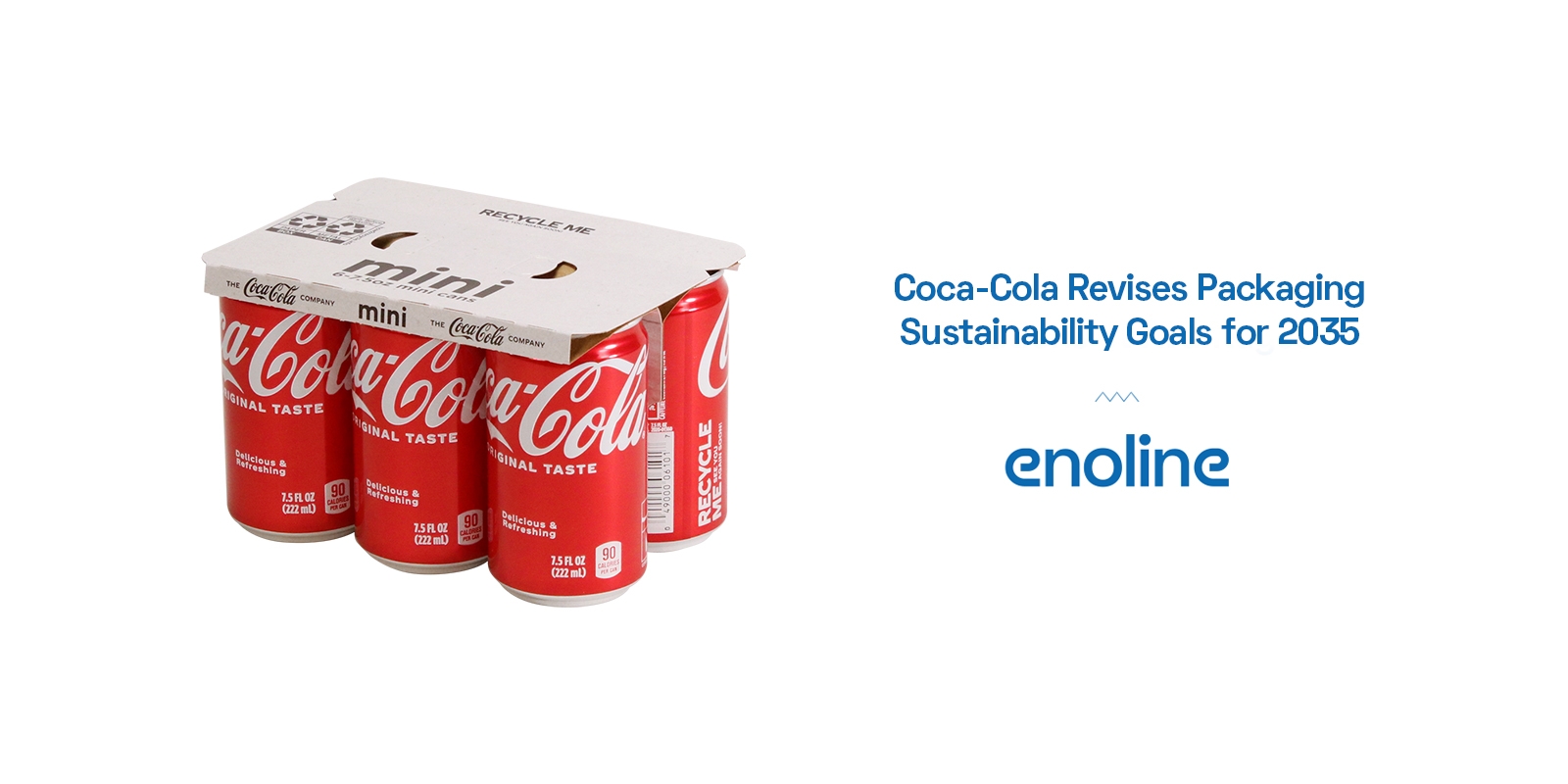December 12th
Coca-Cola Revises Packaging Sustainability Goals for 2035

Coca-Cola recently unveiled updated packaging sustainability targets for 2035, narrowing its focus on packaging design and collection after use. These revised goals replace previous targets for 2025 and 2030 that centered on recyclability, reusable packaging, and recycled content. The beverage giant’s adjusted ambition reflects an evolving approach to environmental challenges but has sparked criticism from sustainability advocates.
New Packaging Sustainability Targets for 2035
Coca-Cola’s revised sustainability strategy introduces two core goals:
1. Increasing Recycled Content in Packaging: Coca-Cola aims to include 35% to 40% recycled materials across its primary packaging, including plastic, glass, and aluminum. Specifically, the goal is to boost recycled plastic content to 30-35% on a global scale.
2. Enhancing Packaging Collection Initiatives: The company seeks to collect 70% to 75% of the equivalent volume of bottles and cans it introduces into the market each year.
Despite these commitments, Coca-Cola has omitted updates regarding reusable packaging targets, which were previously emphasized in its “World Without Waste” initiative.
Scaling Back From Previous Sustainability Goals
Coca-Cola’s earlier goals were significantly more ambitious. In 2018, under the "World Without Waste" campaign, the company committed to recycling the equivalent of 100% of its packaging by 2030. The latest announcement reduces this focus, prioritizing collection partnerships for only 75% of the packaging volume.
This pivot signals a scaled-back ambition, prompting skepticism about the company’s commitment to leading in sustainable packaging. Coca-Cola’s global EVP of communications and sustainability, Bea Perez, acknowledged the complexity of meeting voluntary environmental targets, citing significant challenges in infrastructure, cost, and quality.
Key Obstacles Hindering Progress
Several critical issues are influencing Coca-Cola’s sustainability struggles:
1. Material Scaling and Quality Challenges: Despite aspirations to increase the recycled content in its packaging, Coca-Cola cites cost and quality variability as major barriers. For instance, in 2023, 47.7% of its packaging was plastic bottles, 26% was aluminum/steel cans, and 10.4% was glass bottles. Achieving high levels of recycled materials across these categories presents operational difficulties.
2. Recycling Infrastructure Variability: Recycling systems differ vastly across jurisdictions worldwide, creating a fragmented approach to sustainable packaging collection. Coca-Cola stressed the importance of collaborative action and well-designed recycling systems to meet these objectives.
3. Reusability Setbacks: Coca-Cola’s shift away from reuse targets has been criticized sharply. Sam Pearse, campaign director of The Story of Stuff Project, emphasized the lack of tangible progress in this area. “Coca-Cola’s pledge lasted less time than one of their reusable bottles might expect to be in circulation,” Pearse remarked.
Notably, only 1.2% of Coca-Cola’s plastic packaging was reusable in 2023, highlighting a concerning downward trend since the company’s previous commitment to increasing reusable packaging to 25%.
Coca-Cola’s Environmental Performance in Numbers
Coca-Cola’s August 2023 environmental report underscores mixed progress:
• Recyclability Rate: Across its entire packaging portfolio, recyclability stands at 90%.
• Recycled PET Usage: Coca-Cola’s primary consumer packaging currently includes 17% recycled PET content.
• Progress Toward Goals: While on track to make all packaging recyclable by 2025, Coca-Cola remains behind schedule on recycled content and collection goals for 2030.
Sustainability Challenges Across the Beverage Industry
Coca-Cola isn’t alone in revising its sustainability targets. Competitors like PepsiCo have also announced struggles to meet their 2025 goals. PepsiCo admitted it was unlikely to achieve the commitment to design 100% recyclable, compostable, or reusable packaging.
Similarly, global brands such as Unilever and Grove Collaborative adjusted their sustainability goals this year in response to complex challenges, highlighting a broader industry-wide issue.
Coca-Cola’s Role in Plastic Pollution
In addition to evolving targets, Coca-Cola faces mounting pressure over its role in global plastic pollution. Lawsuits in major U.S. jurisdictions, including Los Angeles County and Baltimore, allege the company’s contribution to environmental degradation. Critics have long pointed to Coca-Cola as one of the world’s largest plastic polluters, urging stronger accountability.
Environmental organizations like the Break Free From Plastic (BFFP) coalition argue that Coca-Cola’s revised goals are insufficient to address its plastic footprint. A 2023 Ellen MacArthur Foundation report revealed that Coca-Cola’s use of virgin plastic has increased by approximately 6% since 2019, despite pledges to reduce reliance on non-recycled materials.
Let us find the best palletizer for your company !